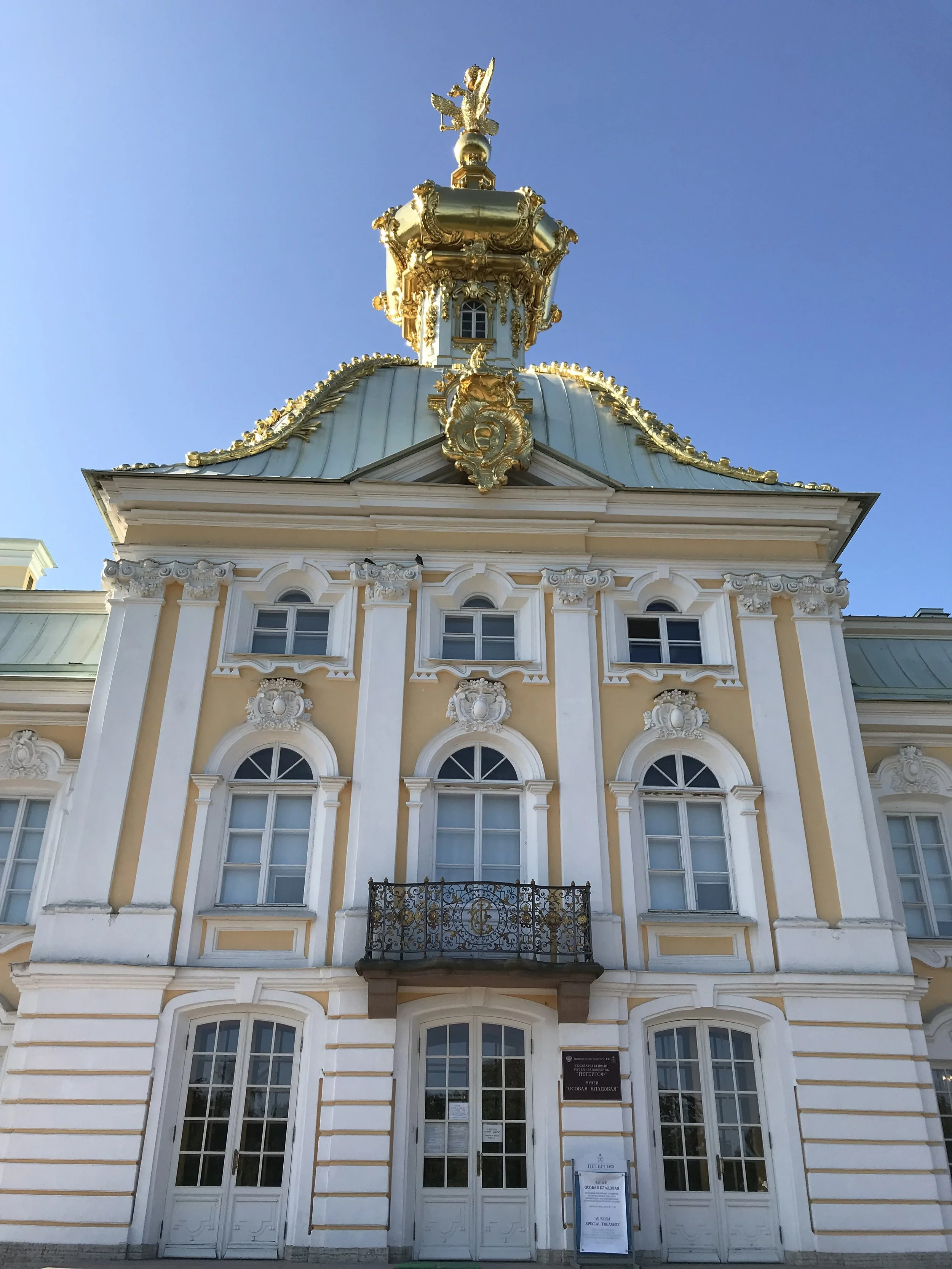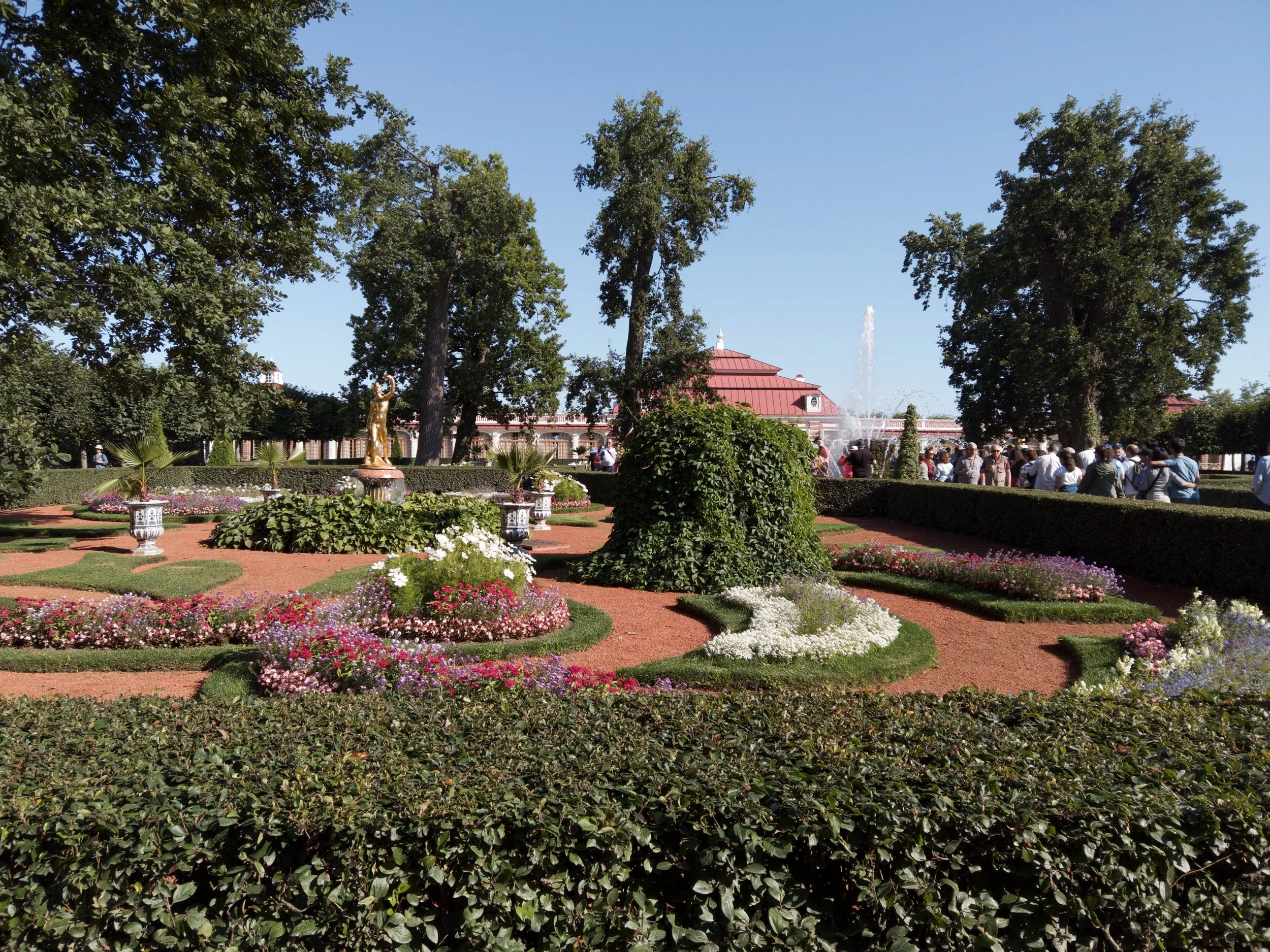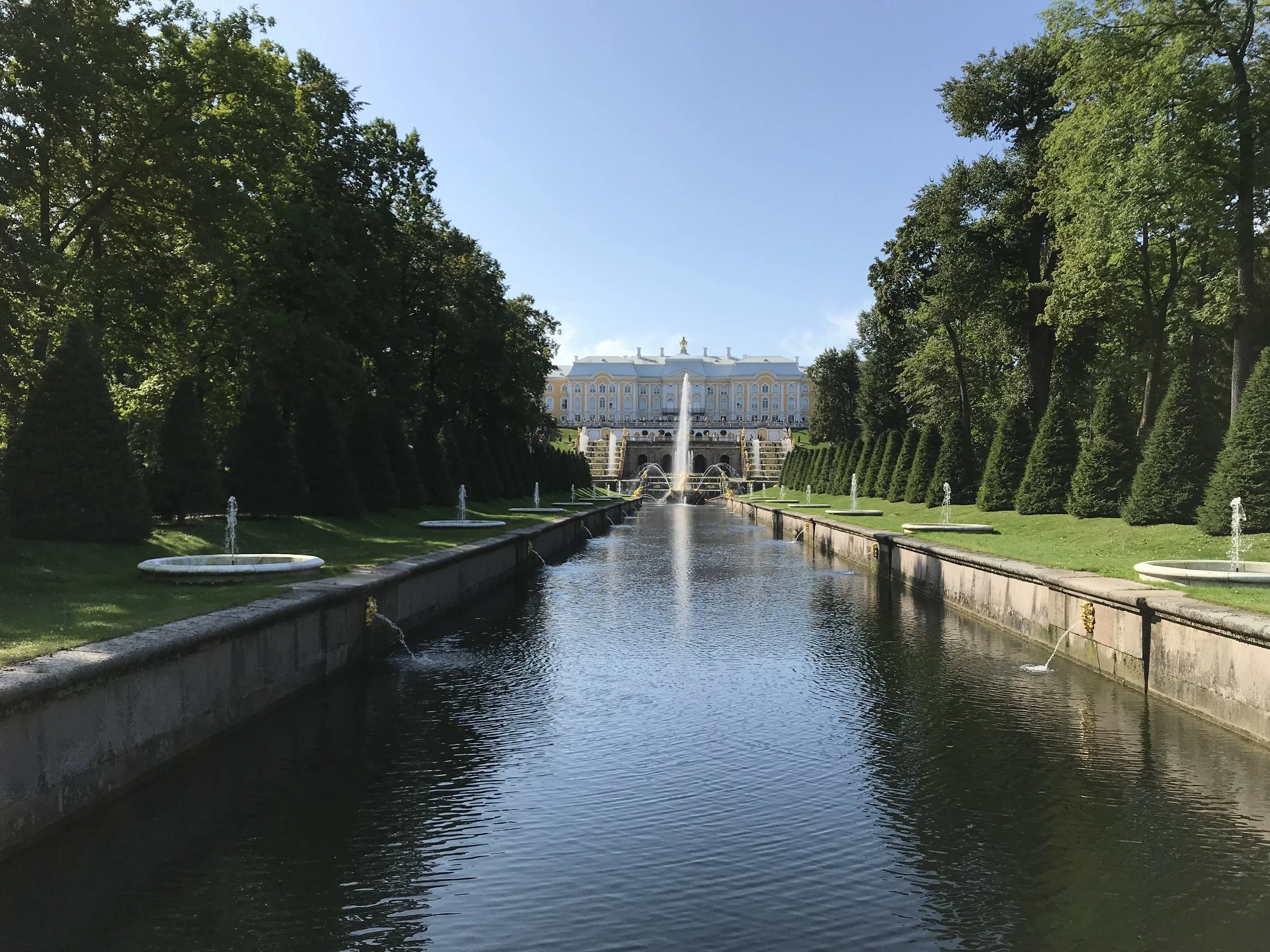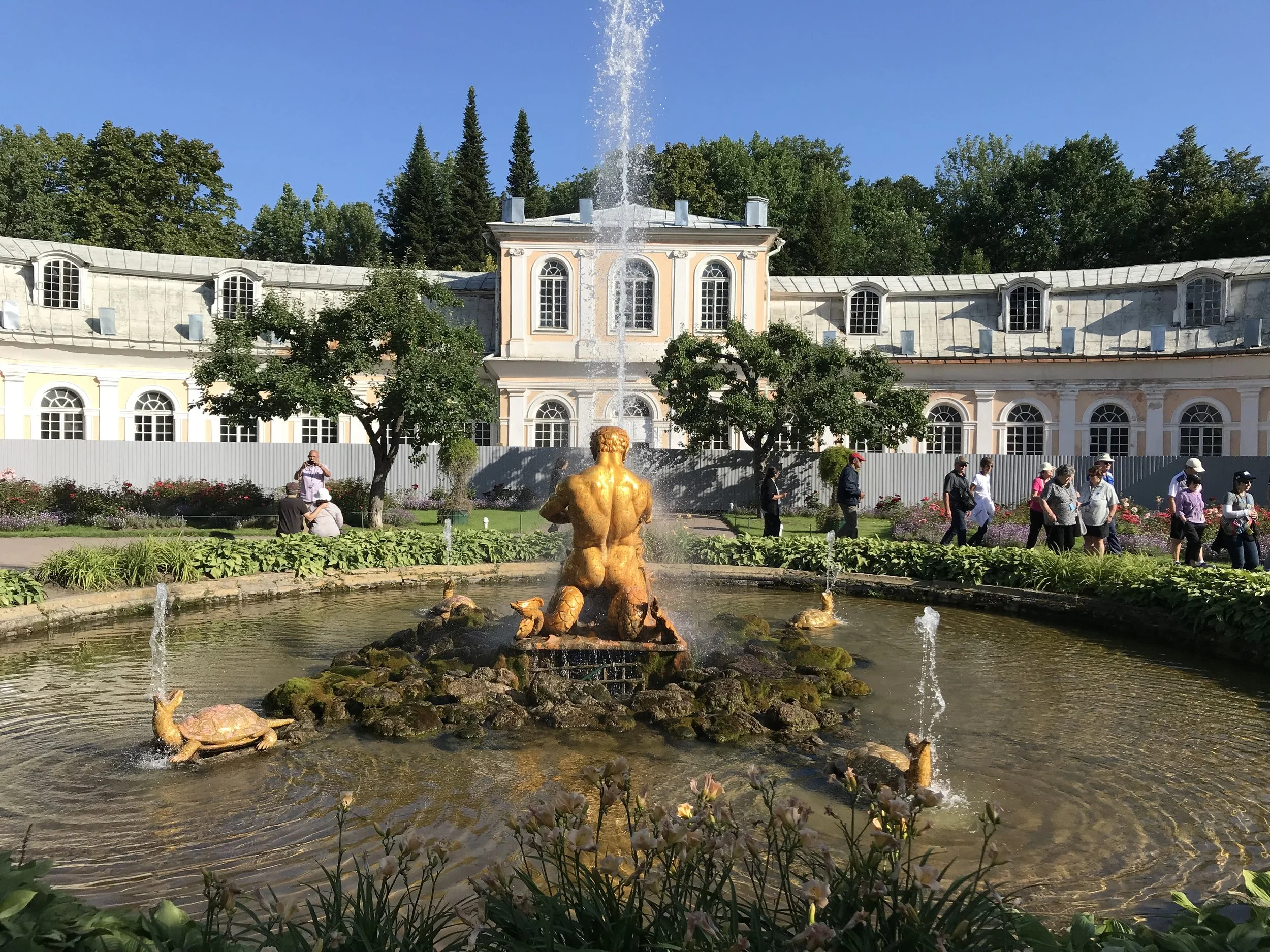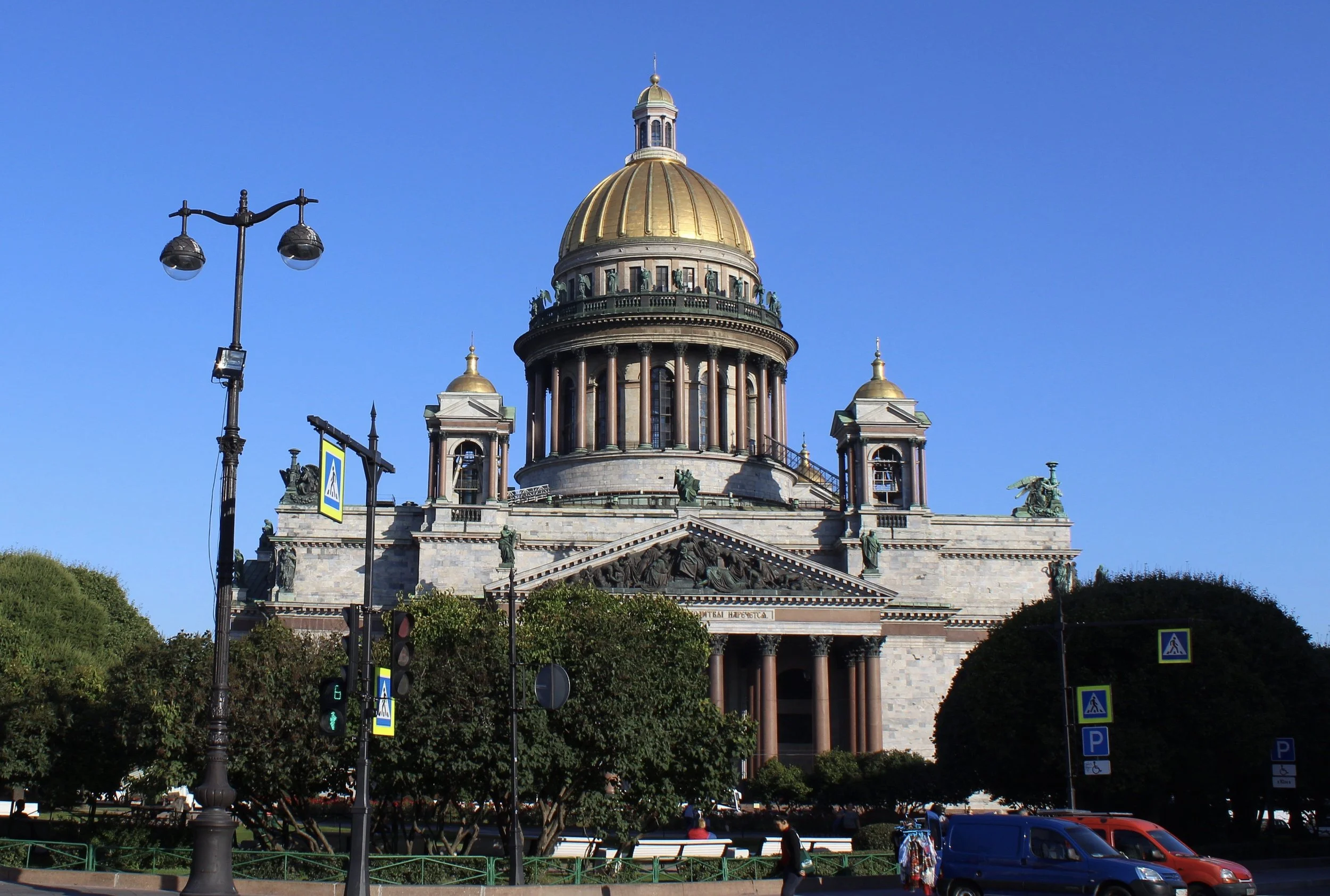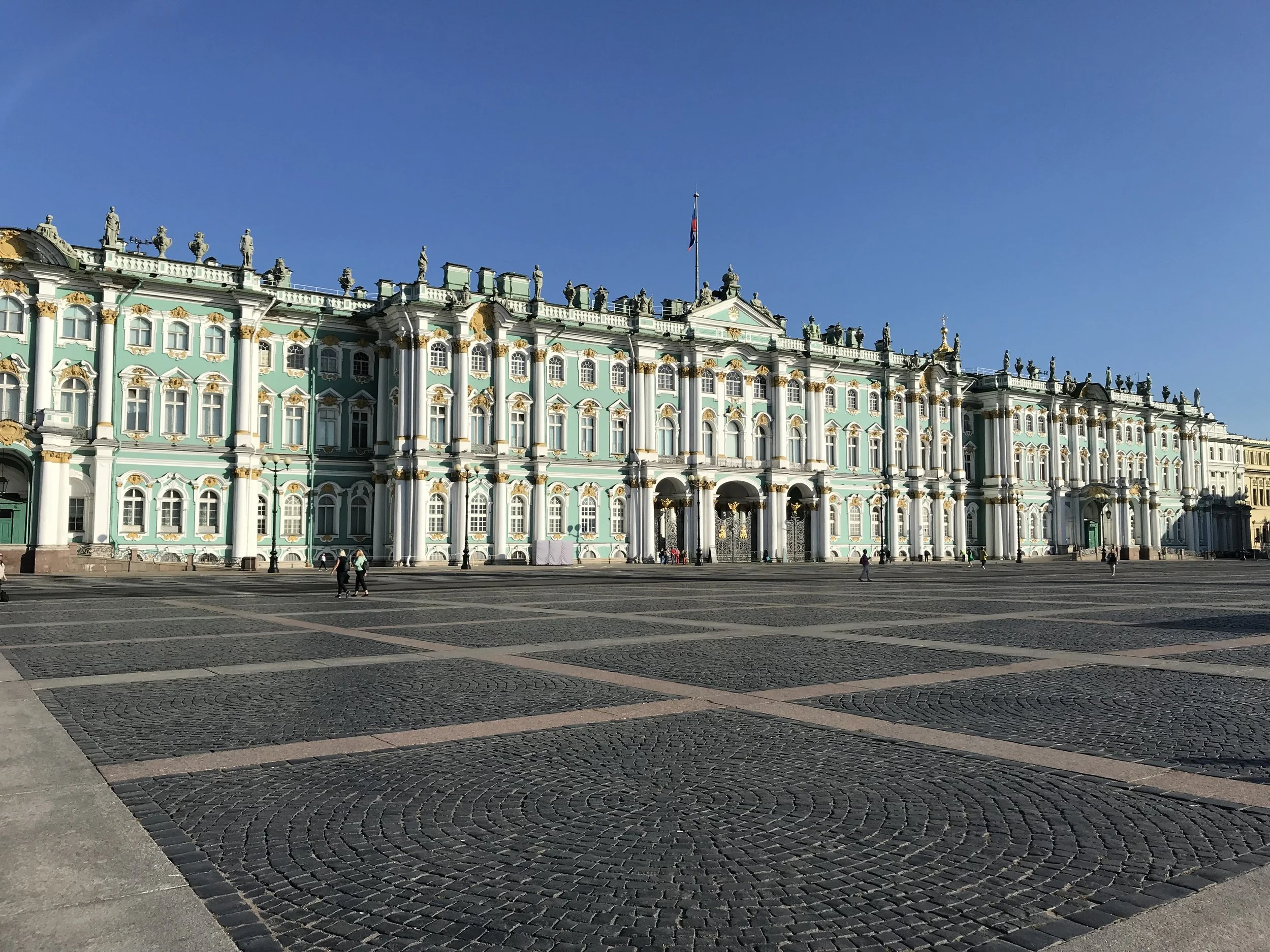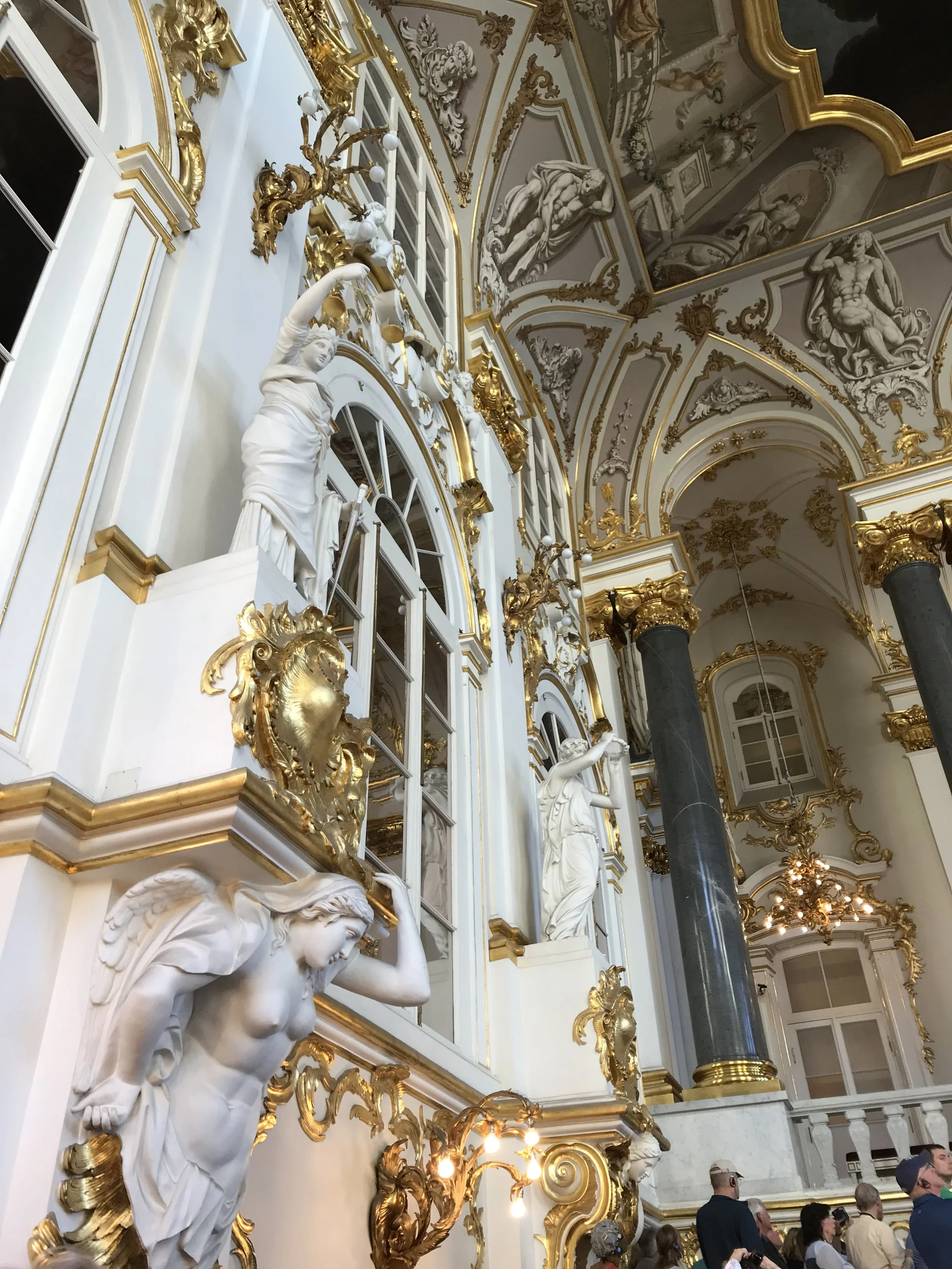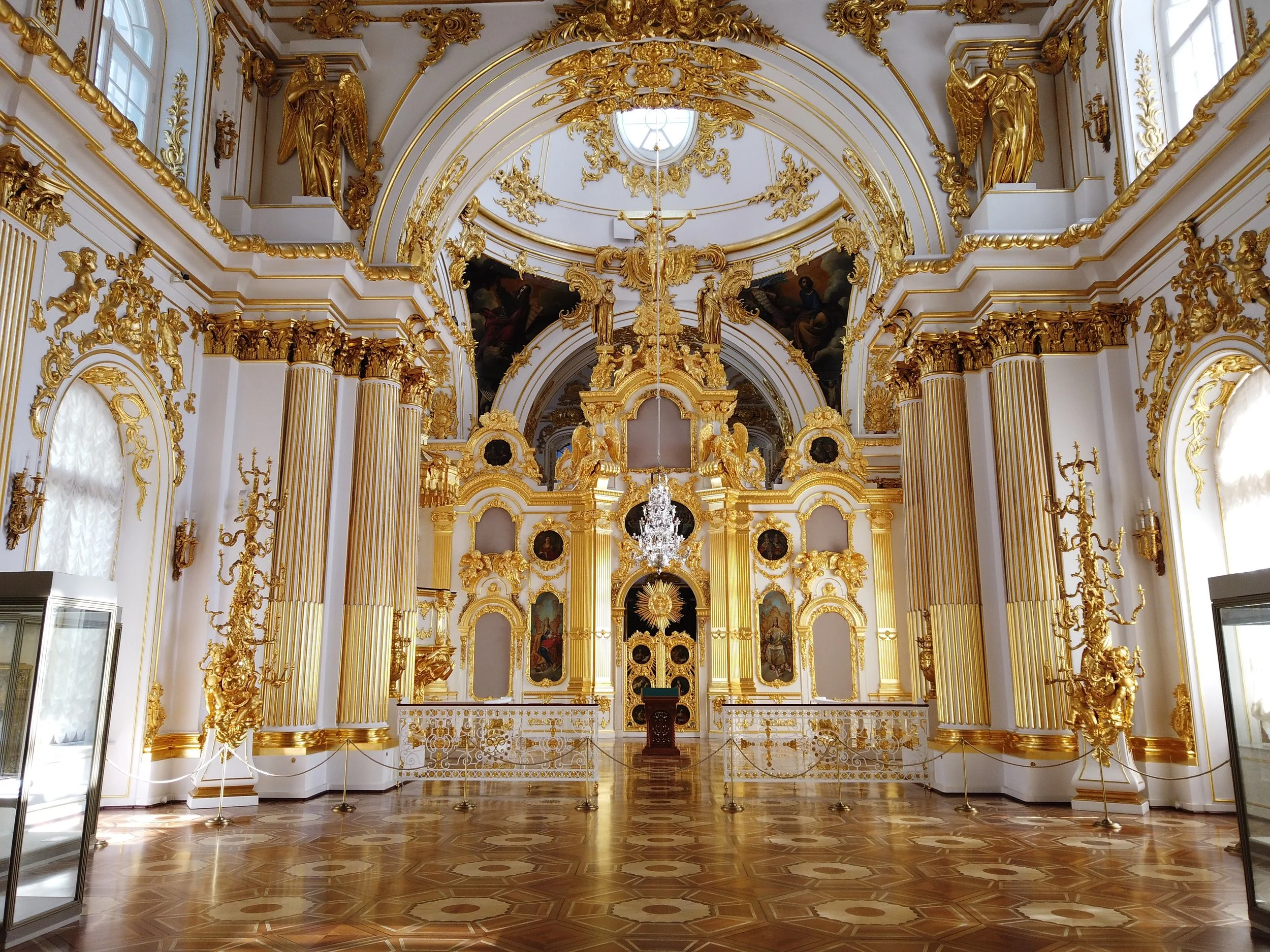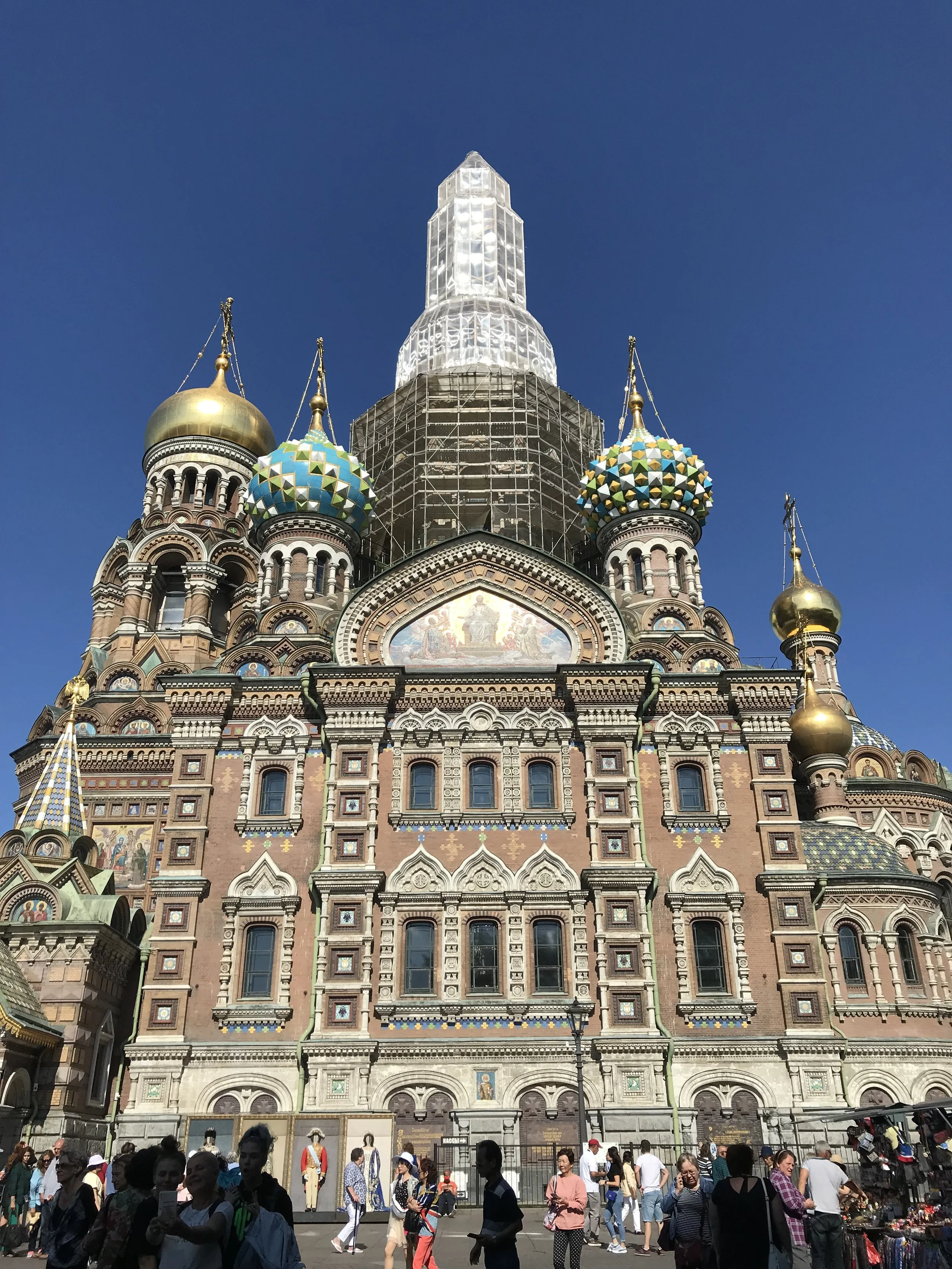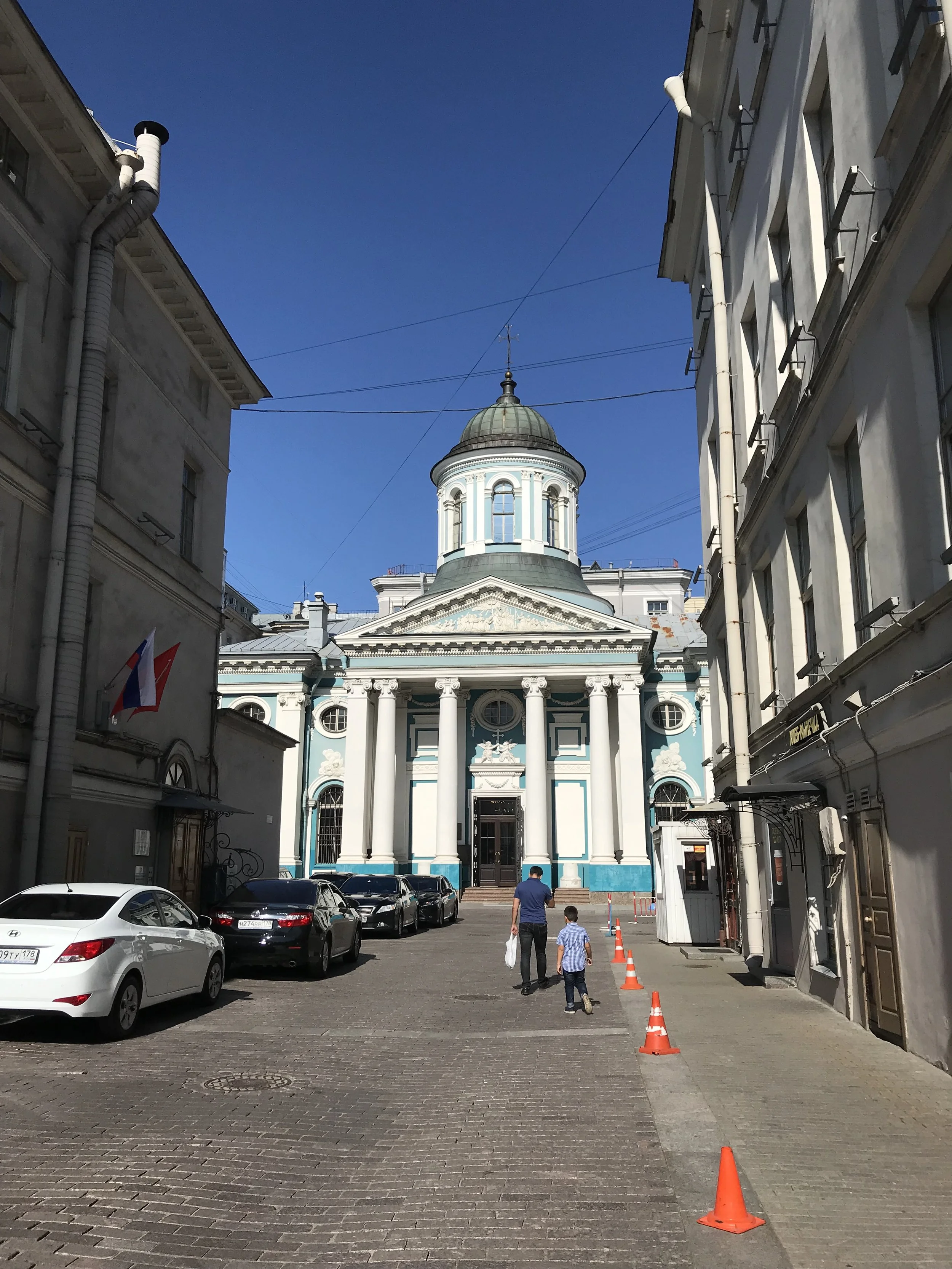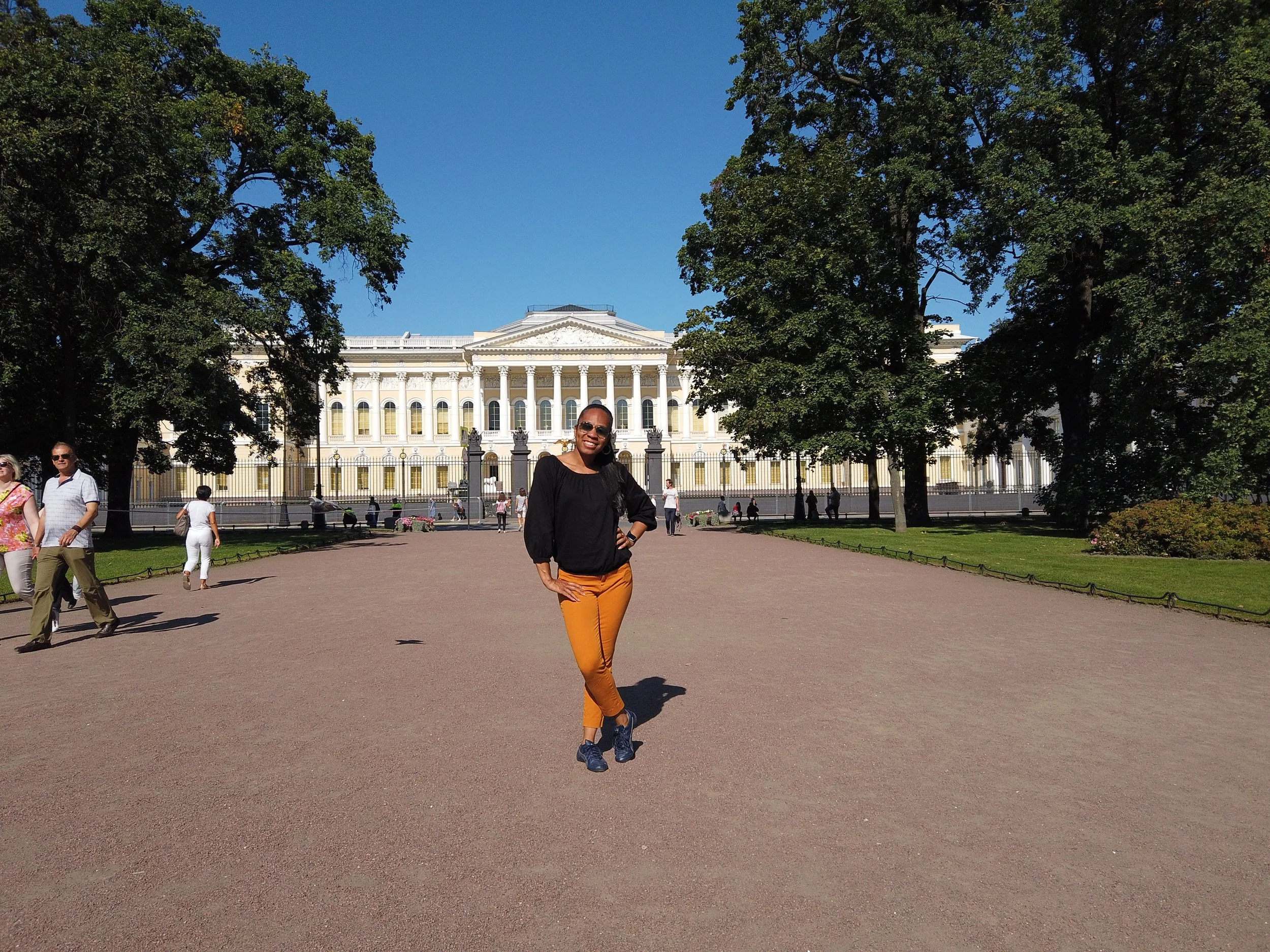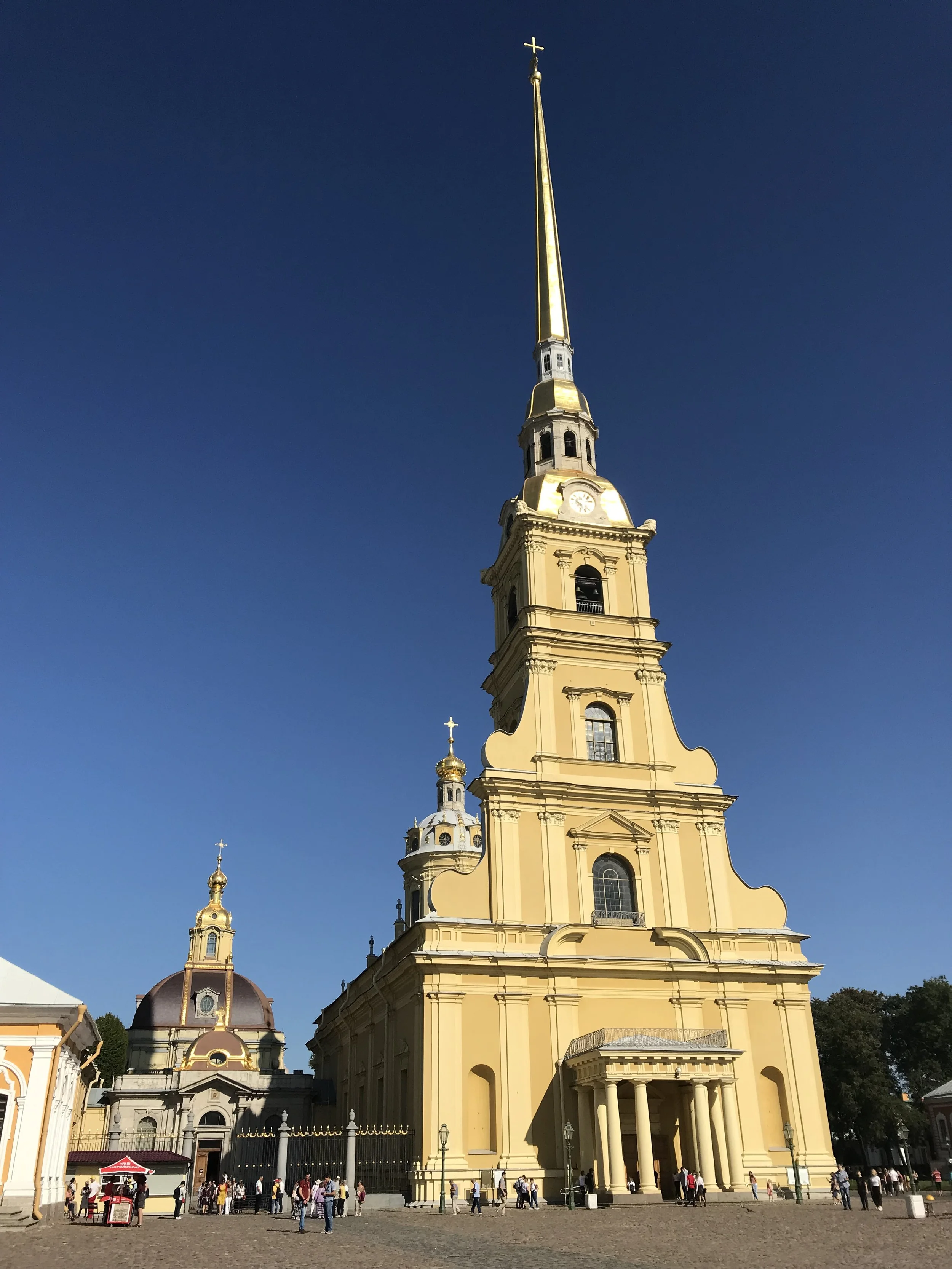St. Petersburg Russia
Let me start by saying I never thought I would visit Russia. When I saw it listed on the cruise itinerary, I was honestly excited. Arriving in port here was nothing like arriving anywhere else on the trip. Every passenger had to clear customs one by one before stepping outside. It was a long, slow line, and the officers were thorough. They checked passports, visas, entry cards, and asked questions. No one smiled, and no one rushed. It set the tone right away that this was not going to be like the other ports where you just walk off the ship and start exploring.
We were traveling on the ship visa, which only covered guided visits within St. Petersburg. Russia’s visa rules are strict, and anyone who wanted to take a train to other cities needed their own separate visa. Once everyone made it through customs, we headed straight to our bus.
St. Petersburg was one of the major stops on my Baltic Sea cruise, and we spent two full days here. Unfortunately, because of current politics, most cruise lines have removed Russia from their itineraries, so this stop no longer exists. During my trip, it was still a standard part of the route.
Peterhof Palace and Gardens
Day One
We spent the first day outside the city center at Peterhof Palace and Gardens. The drive took us through the edges of St. Petersburg before opening out to the countryside. When you arrive at Peterhof, the scale of the estate stands out right away. The palace sits high above the grounds with long terraces that look out over the gardens and toward the sea. The main facade is painted a deep yellow with white trim and lined with gold accents. The wings stretch across the upper level of the grounds in a way that makes the entire structure feel built to show its opulence from a distance. You can tour the interior of the main palace, but I did not take that tour. It is a timed entry experience with set routes through the rooms, and the cost is separate from the garden ticket.
The Grand Cascade flows straight down from the palace toward the lower park. Gold statues line the fountains, and there are dozens of water features on each side. The gardens themselves are vast. Long straight paths cut through the grounds, and smaller walkways branch off toward side fountains, small ponds, and clusters of trees. Some areas have trimmed hedges and formal flower beds, while others open into shaded sections with benches and quiet spots to rest. You pass smaller pavilions scattered around the grounds, each one sitting near its own fountain or overlook. There are more fountains throughout the gardens than you expect, each with a different design or statue, so even simple walks turn into a series of small stops.
You can wander through the gardens for hours without repeating the same area. Even with crowds it never feels cramped. The space remains due to the wide lawns and extended views.
One thing that surprised me was learning how all of this water moves. The whole system is powered by gravity. The water come from natural sources behind the palace at a higher elevation, and it flowed through underground channels to feed the fountains. No pumps!
The fountain turning on
Most people try to time their visit so they can see the fountains turn on for the day — usually around 11 a.m. during the summer season. When the water starts, the whole place shifts. The statues shine a little brighter, the fountains get louder, and the crowds lean in to watch the entire water system come to life. I would be remiss if I did not tell you the crowd can be a bit aggressive when vying for space on the bridge to see. I was pushed and shoved out of position more than once. Luckily I had a pole extender for my camera so I aimed it over the crowd.
Tickets for the Palace and Gardens
Before visiting, know that the gardens (Lower Park) and the main palace are ticketed separately. The entrance to the lower park, which covers the gardens and fountains, is around ₽ 1,000 for general admission. The ticket to enter the Grand Palace itself is higher, approximately ₽ 1,200–2,000 depending on season and nationality. The garden ticket gives you access to the grounds, fountains, terraces, and gardens. The palace ticket covers a guided route through several of the interior rooms. If you want to do both, plan and budget for two separate lineups and two separate entry fees.
St. Isaac’s Cathedral
Day Two
We started the day in St. Isaac’s Square where we stopped to see St. Isaac’s Cathedral. We didn’t go inside, but you don’t have to step in to understand how big it is. The dome stands over the square, and the heavy stone columns make the whole building feel solid and imposing.
Right across the square is Mariinsky Palace, which we passed as we continued our walk. It is not a place most tourists go inside, but you cannot miss it. The long gray façade and the Russian flags on top make it look more like an administrative building than a palace. It sits right in the middle of the square, so you can’t help but walk by it.
Winter Palace/Hermitage Museum
We then moved on to the Winter Palace, which was originally the official residence of the Russian emperors. It was built in the mid-1700s to display the power and wealth of the monarchy and remained the residence of the Romanov family until 1917. After the revolution, the palace was taken over by the new government, and the rooms that once held royal ceremonies and private apartments were eventually opened to the public as part of the State Hermitage Museum. Walking through it today, you can still see signs of both lives layered on top of each other.
The palace sits on Palace Square, with the Alexander Column in the center. The building covers one entire side of the square, and as you approach, the green and white exterior becomes more detailed. Carvings, trim, and ornamentation stretch across the façade.
Inside, the first thing you reach is the Jordan Staircase, a white and gold staircase built for royal ceremonies. It is tall, bright, and fully decorated, and it sets the tone for the rest of the building. From there, the rooms spread out in multiple directions. Some are long galleries lined with artwork, while others look more like restored palace rooms with chandeliers, mirrors, wooden floors, and ornate ceilings.
The museum sections shift from one era to another. You might walk through a hall filled with classical paintings and then turn a corner into a room of tapestries or decorative objects. A few rooms still feel like royal reception halls, with high ceilings and gold trim. It is easy to feel like you’re moving through a maze because every doorway seems to lead somewhere new.
One room that stood out to me was a large white and gold hall that looked almost unreal in person. The walls, columns, arches, and doorways were covered in gold detailing, and the ceiling artwork sat directly above it. The polished wood floors had geometric patterns, and the room stayed bright because of how much light reflected off the gold. It was one of the most memorable spaces in the entire palace.
People talk about the art collection, but the building itself is just as interesting. Some halls are huge, others are narrower and more formal, and everywhere you turn there is something to look at. I only saw a portion of it, but the combination of palace architecture and museum galleries makes the Winter Palace one of the strongest highlights in the city. Admission for the main museum complex is about ₽500 if you are not on a tour.
Church of the Savior on Spilled Blood, under renovation
Our next stop was the Church of the Savior on Spilled Blood, another building I went inside. The exterior looks almost like a cluster of colorful towers stacked on top of one another. It stands out immediately because the architecture is different from most of the other churches in St. Petersburg. This one was designed in the older Russian Revival style to look more like the traditional churches you see in Moscow.
The church was built on the exact spot where Tsar Alexander II was assassinated in 1881. A small section of the road where the attack happened was preserved inside the church, and the entire building was constructed as a memorial in his honor. That connection gives the site a different weight compared to the other landmarks in the city.
Inside, almost every inch is covered in mosaics — walls, arches, ceilings, and domes. There are thousands of them, and the detail in each one is incredible. The interior feels darker and more intimate than some of the larger cathedrals because the artwork covers so much of the surface. Even though it was one of the most crowded places we visited, the mosaics make it worth the stop. Entry is generally around ₽350.
St. Catherine Armenian Church
After leaving the Church of the Savior on Spilled Blood, we walked past yet another church: St. Catherine Armenian Church, tucked inside a narrow courtyard just off the street. It is easy to miss if you are not paying attention, but that’s partly what makes it interesting. The building is smaller and more understated than the major cathedrals, and the quiet courtyard around it gives it a calmer feel. I didn’t go inside, but even from the entrance, you can tell it has a different character than the larger, more elaborate churches we had just visited.
Russian Museum
From there we stopped outside the Russian Museum, which focuses on Russian artists and artwork from different eras. I did not go in, but the building is hard to miss. The long yellow façade and the wide courtyard in front make it look more like a palace than a museum. Admission typically runs around ₽500–700, depending on the exhibit.
Peter and Paul Fortress and Cathedral
Our final stop of the day was the Peter and Paul Fortress and Cathedral, where I did go inside. The cathedral is known for its tall, narrow golden spire that you can see from across the river, and it stands out immediately as you approach the island. Inside, the space is lined with tombs of former Russian rulers, including almost every member of the Romanov dynasty. This is also where the remains of the last imperial family were laid to rest — Nicholas II, Alexandra, and their children, including Anastasia. Their burial site sits in a small chapel within the cathedral, and even if you are not deeply familiar with Russian history, it is a striking place to stand because of everything tied to their story.
The fortress grounds sit along the water and offer wide views back toward the city. Walking the pathways around the island gives you a different angle of St. Petersburg — quieter, open, and less crowded than the main streets. It was a calm way to end the day after visiting so many major landmarks. Entry to the cathedral and museum complex is around ₽450, with combined tickets available for about ₽600.
I must say I thoroughly enjoyed my time in St. Petersburg. It was one of those places that brings history to life and reminds you that a country’s politics is often not representative of its people.

